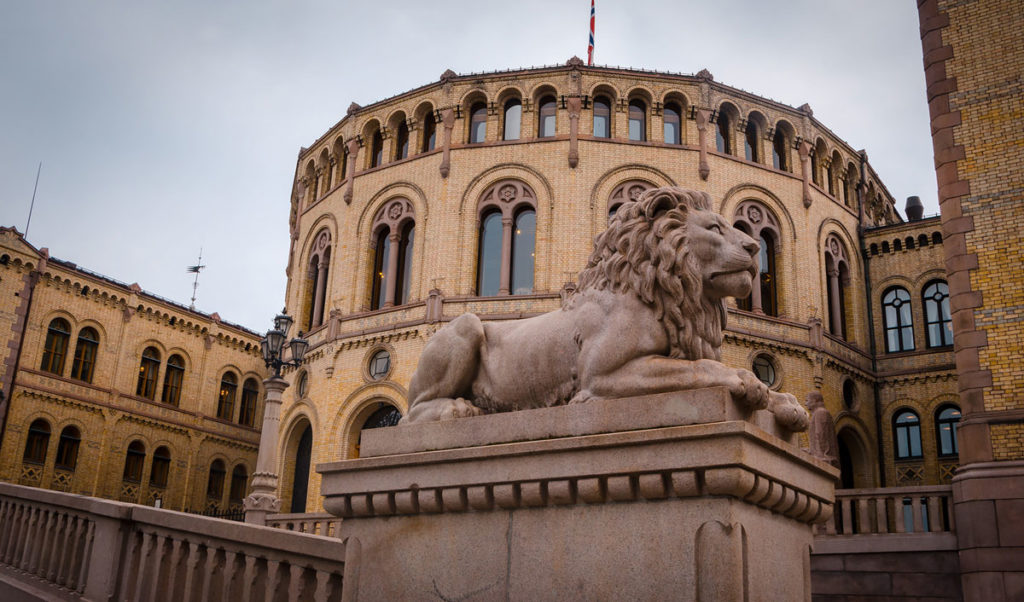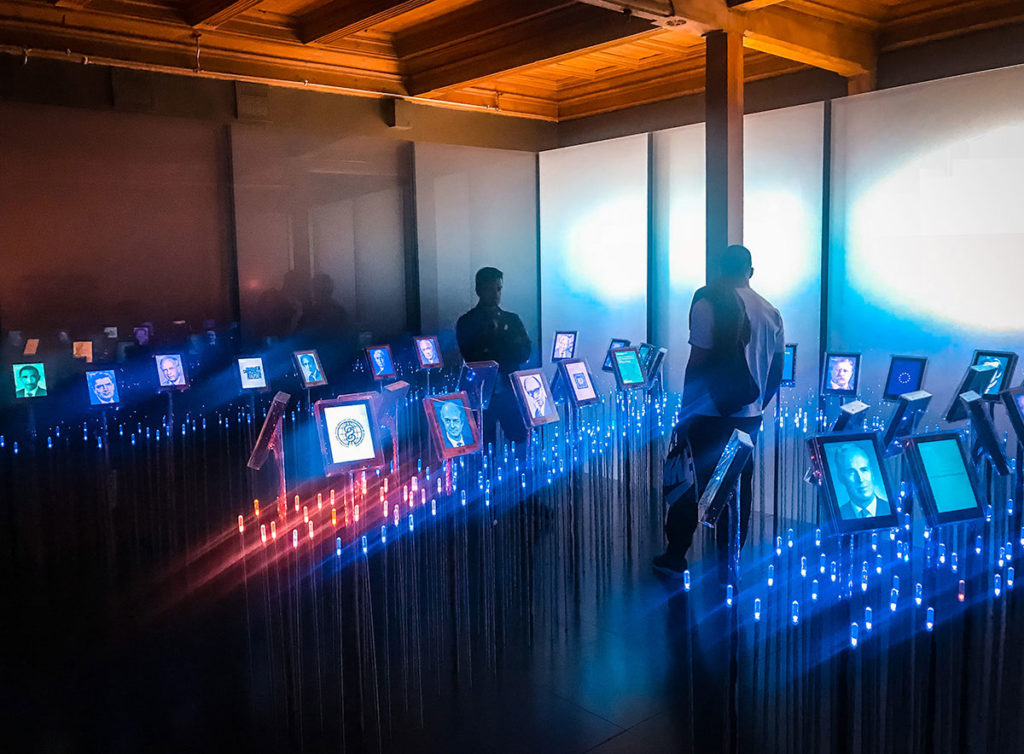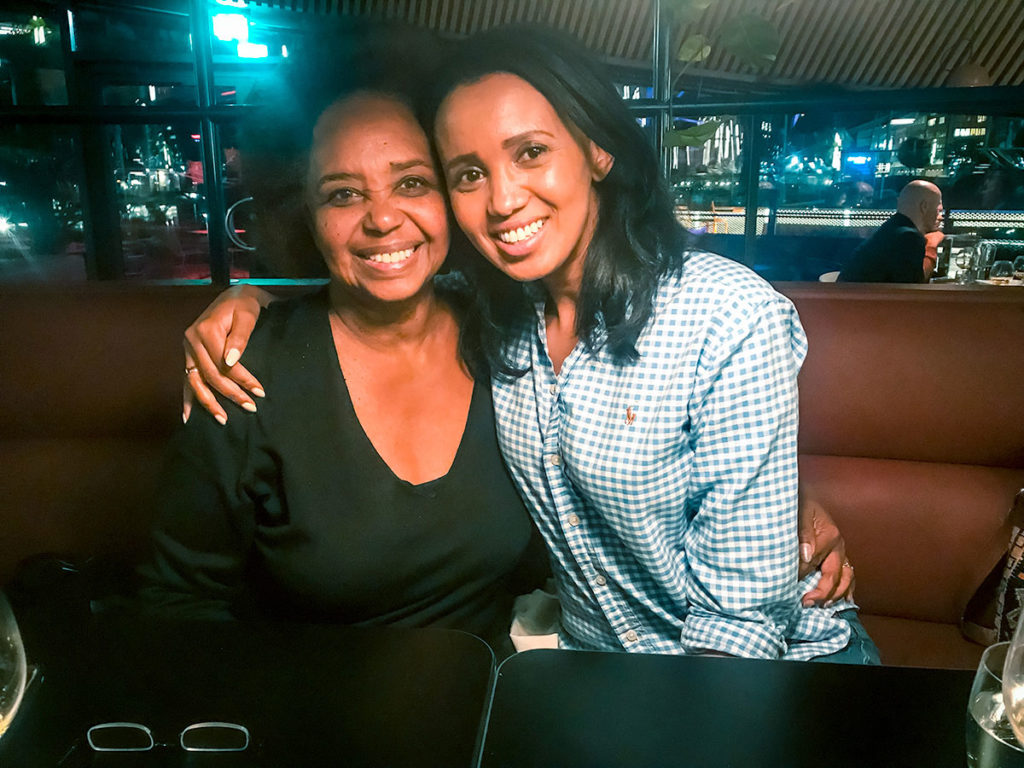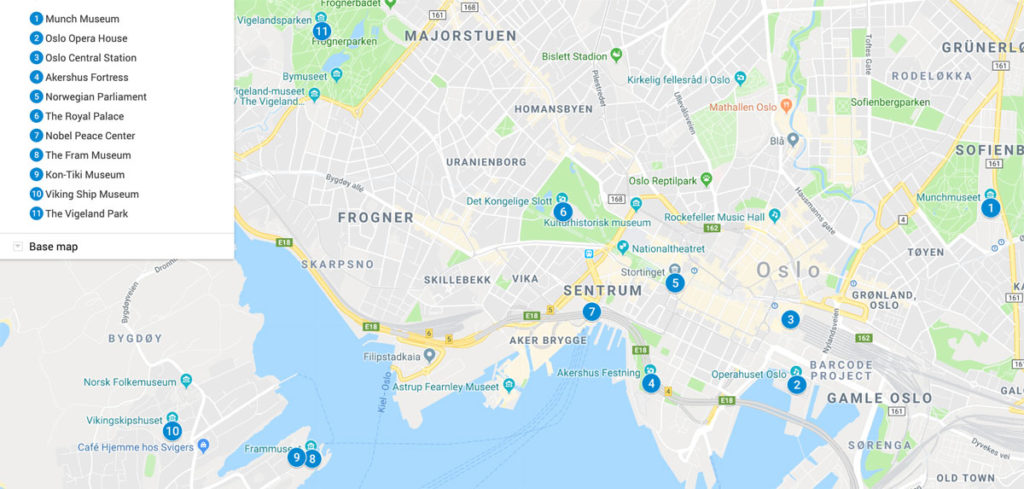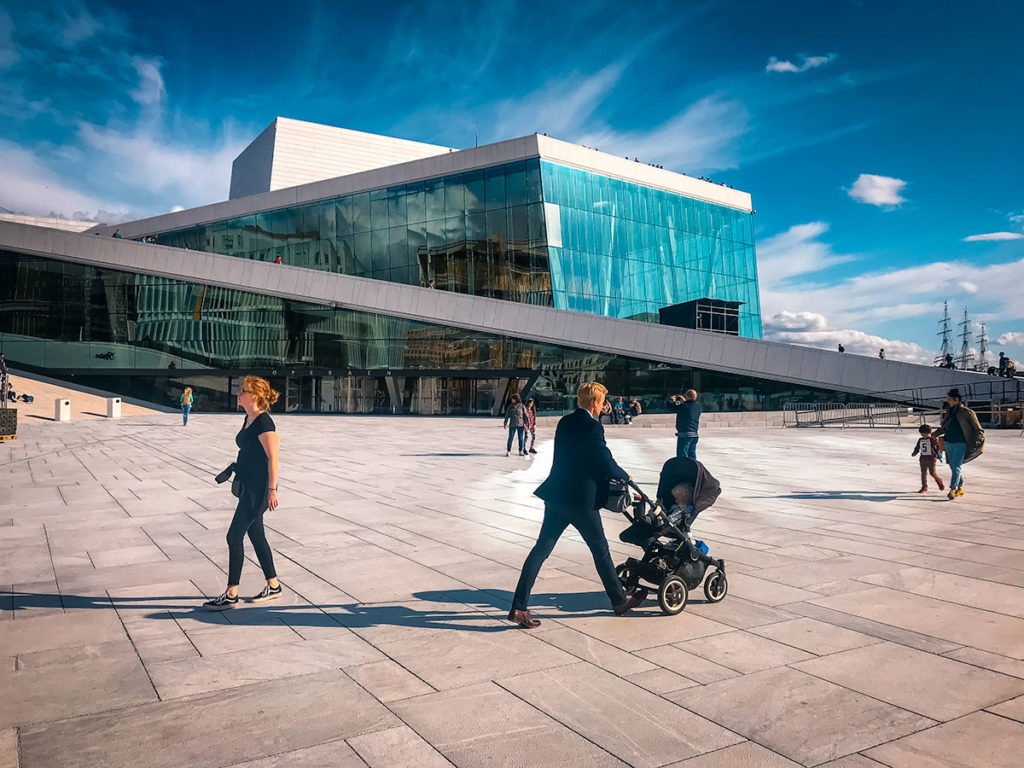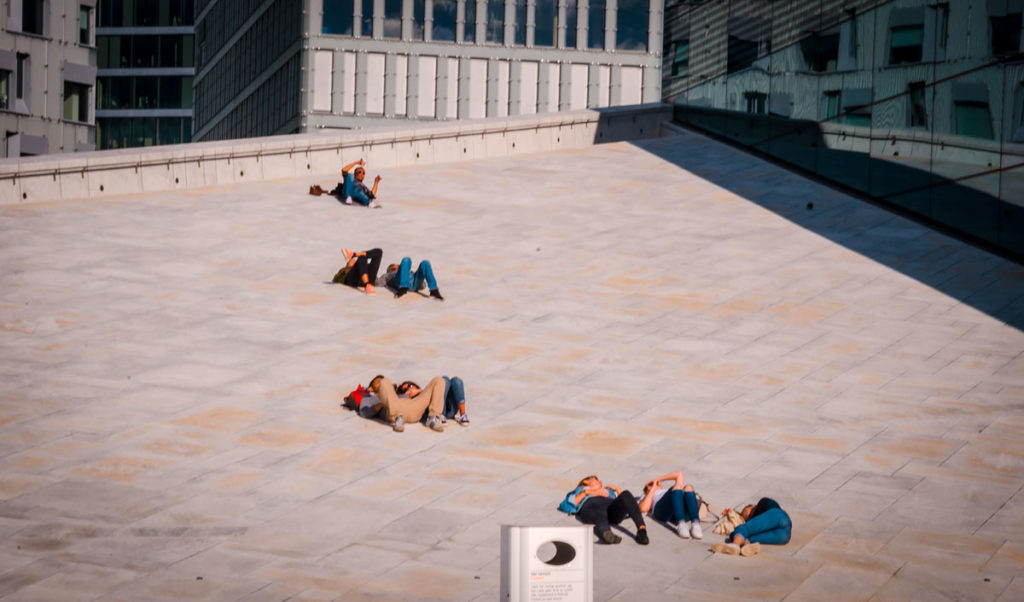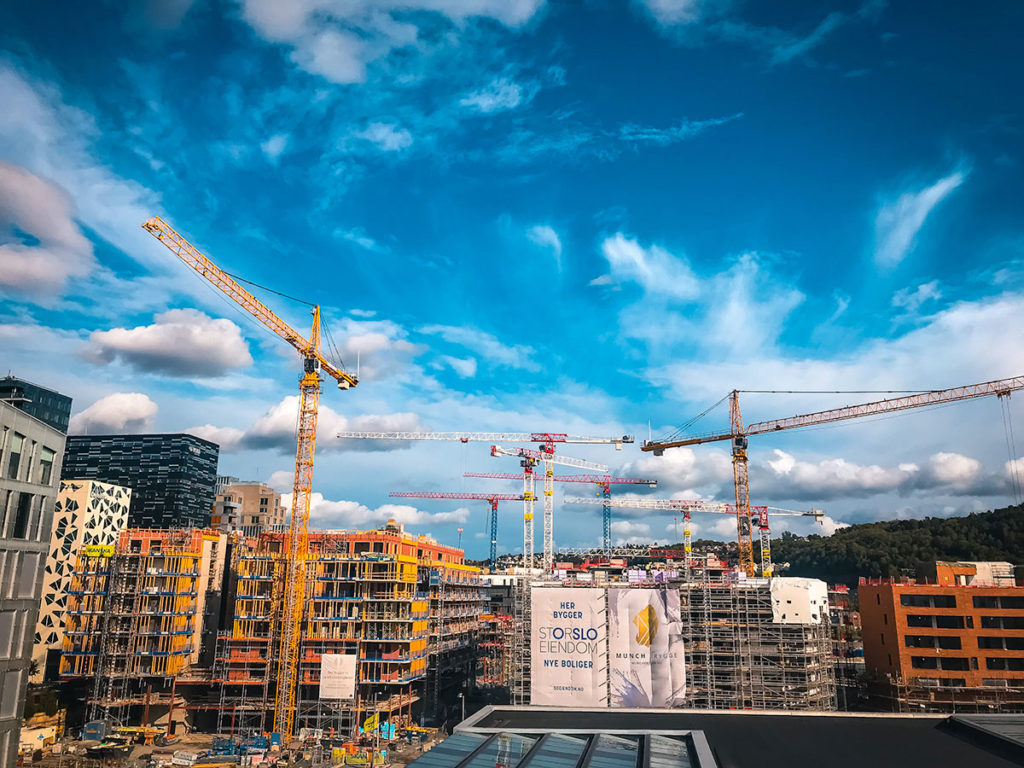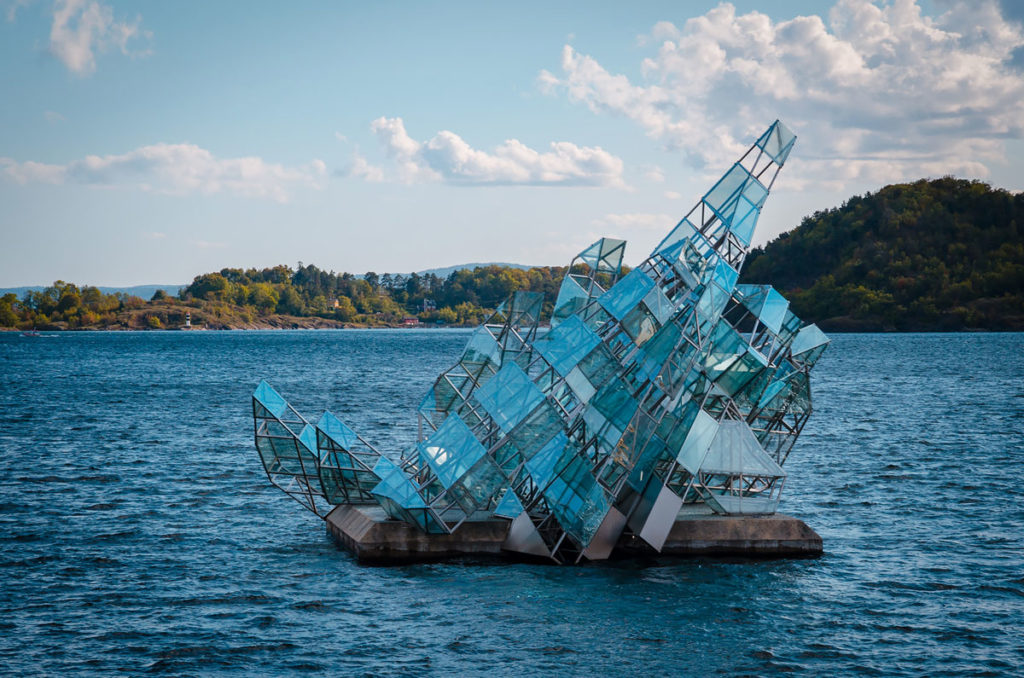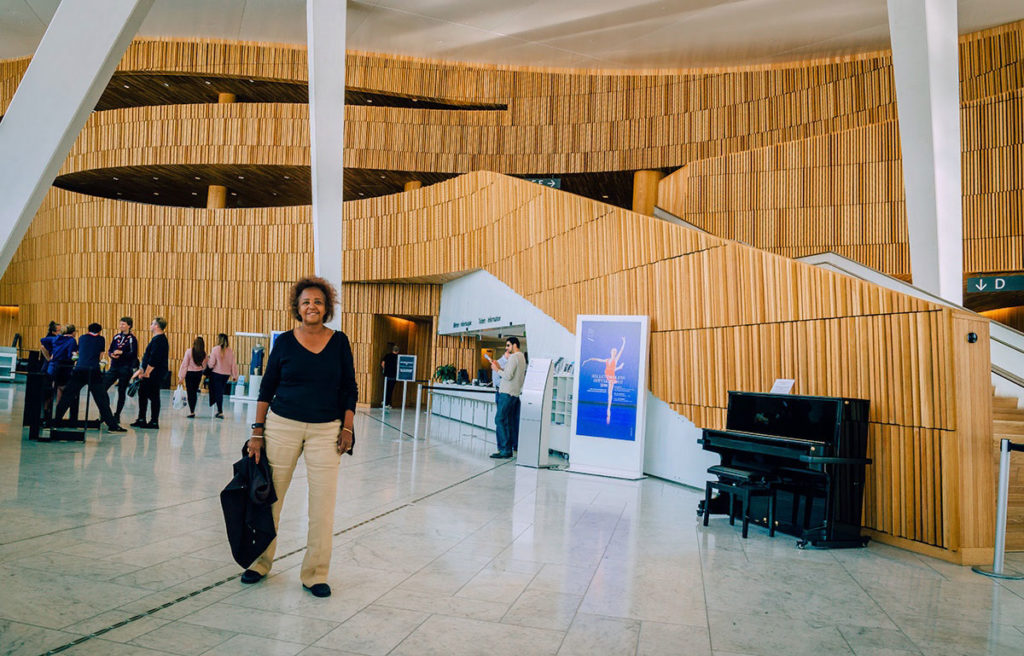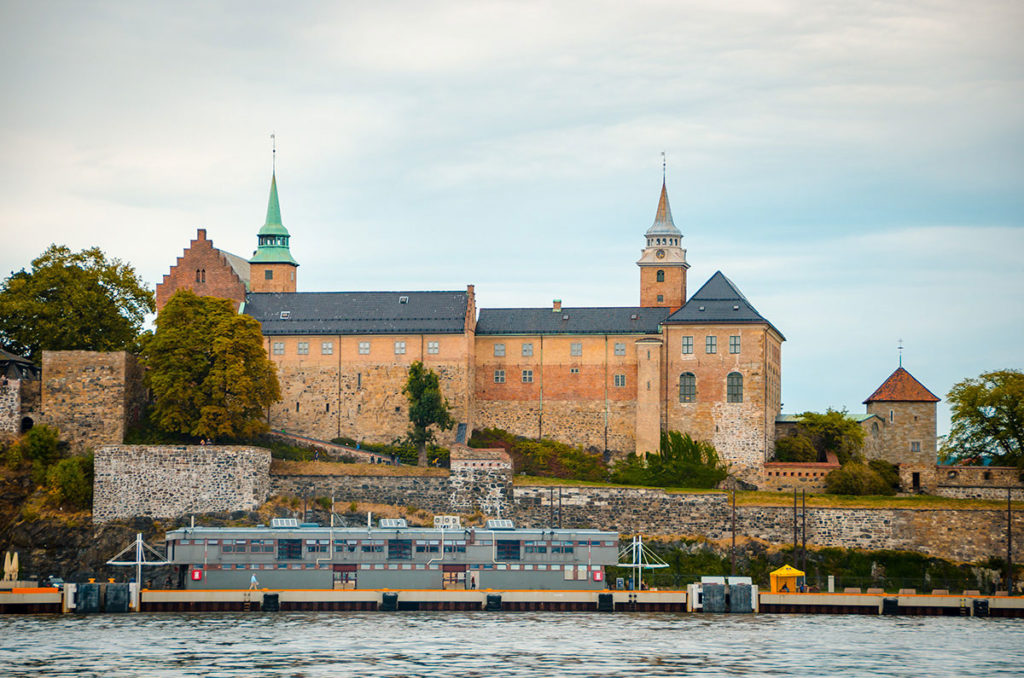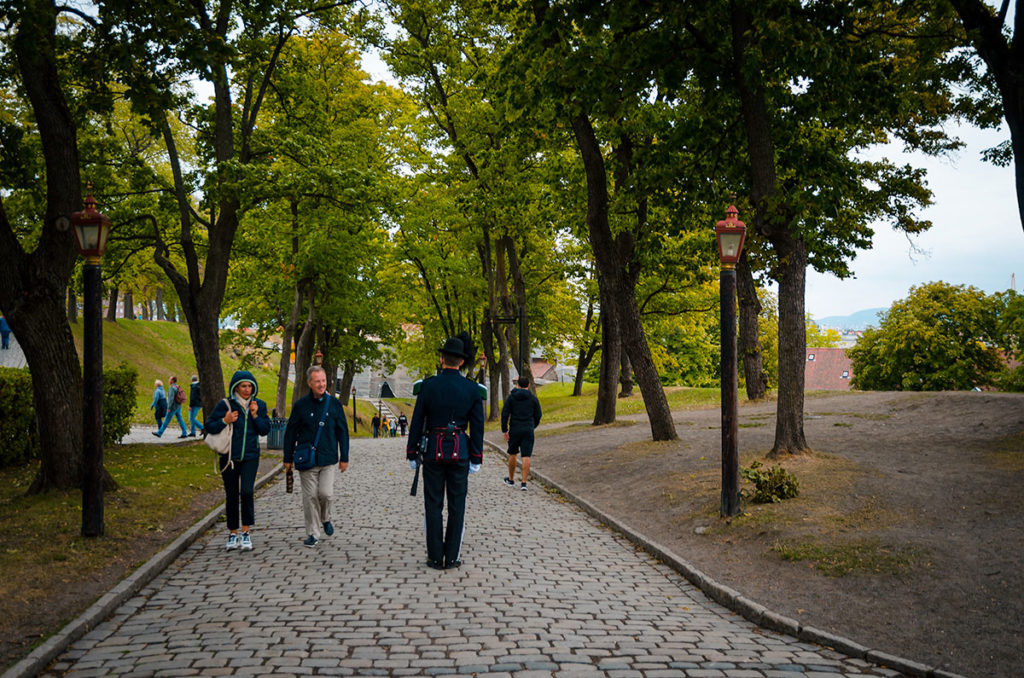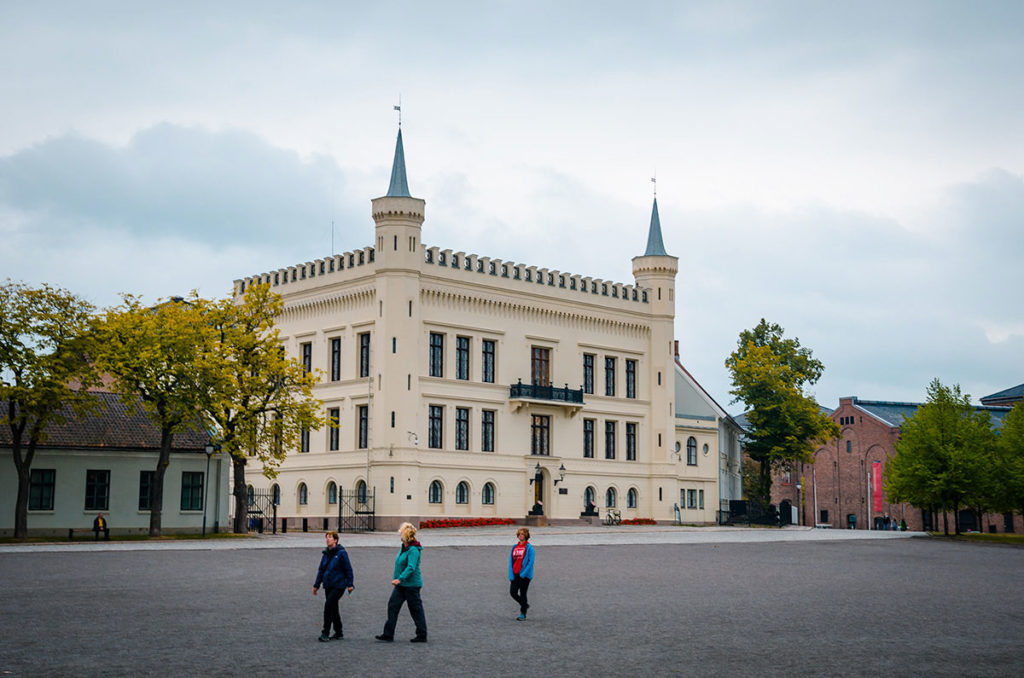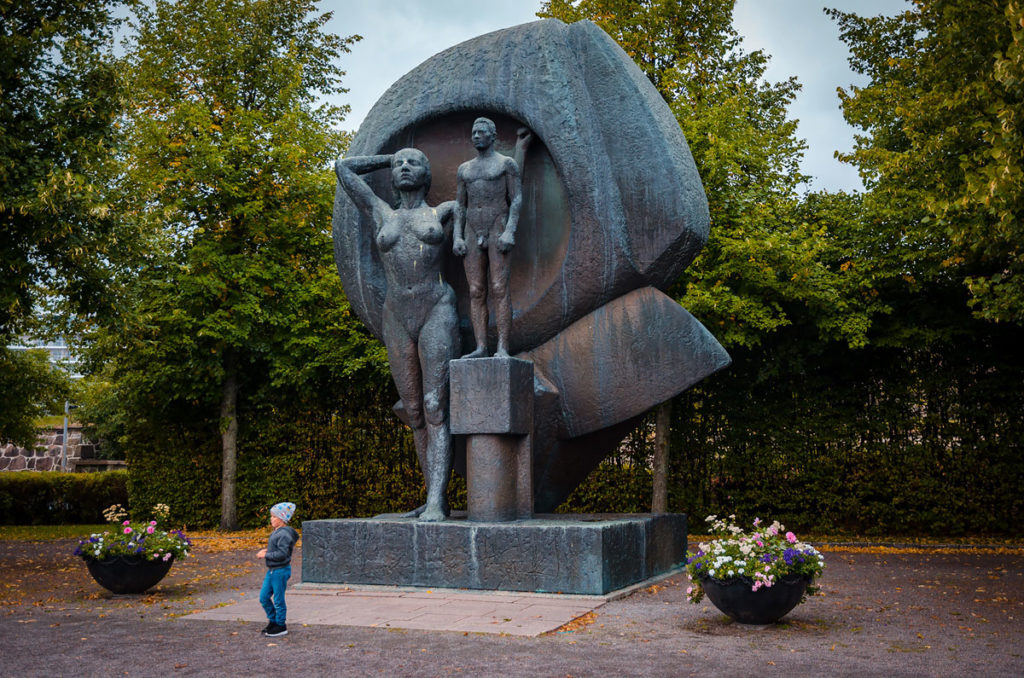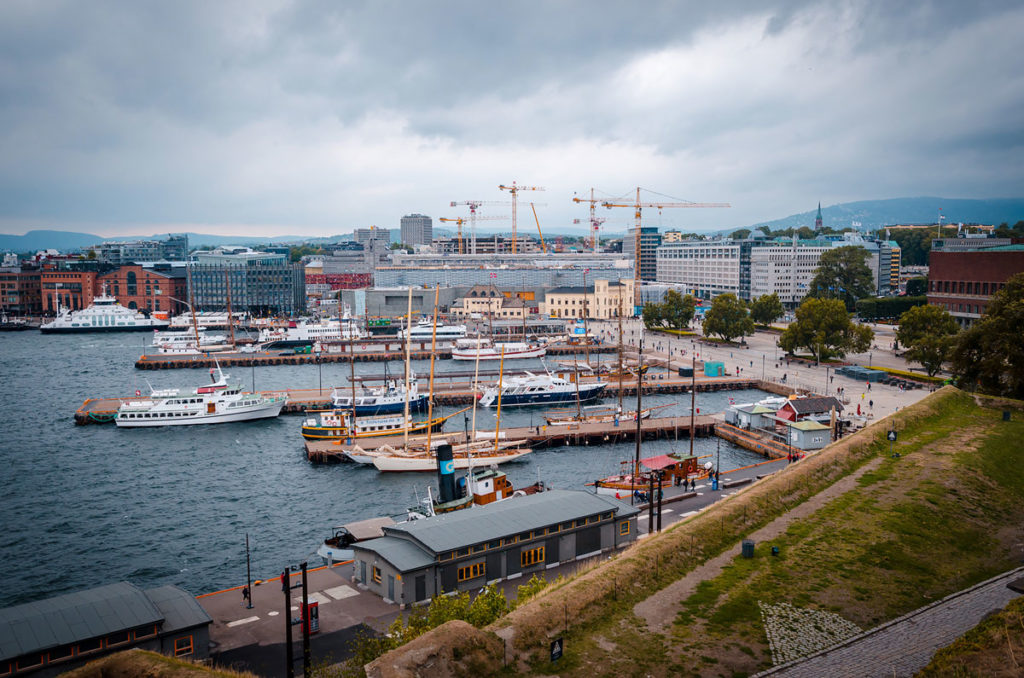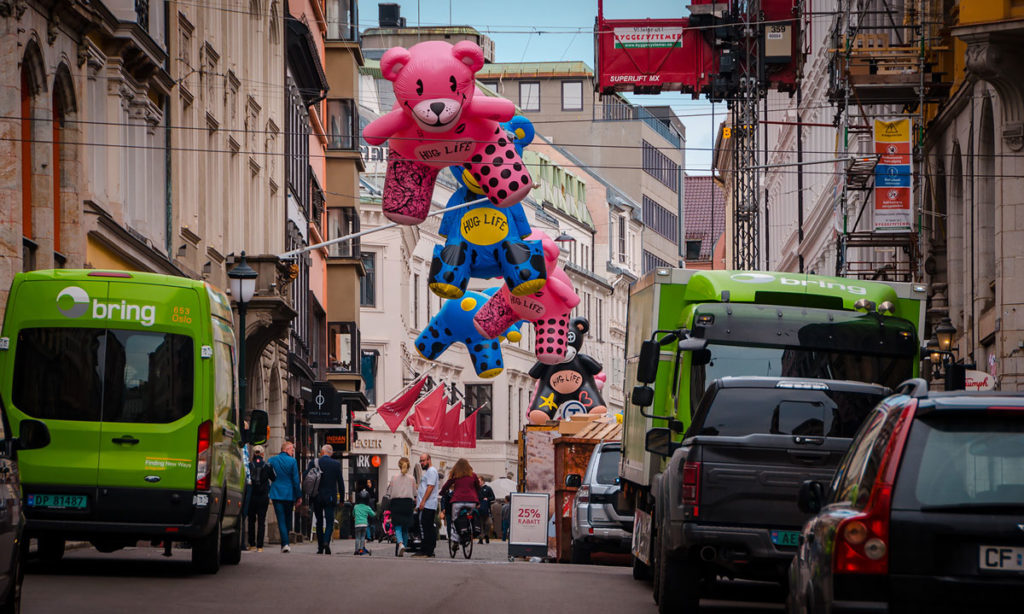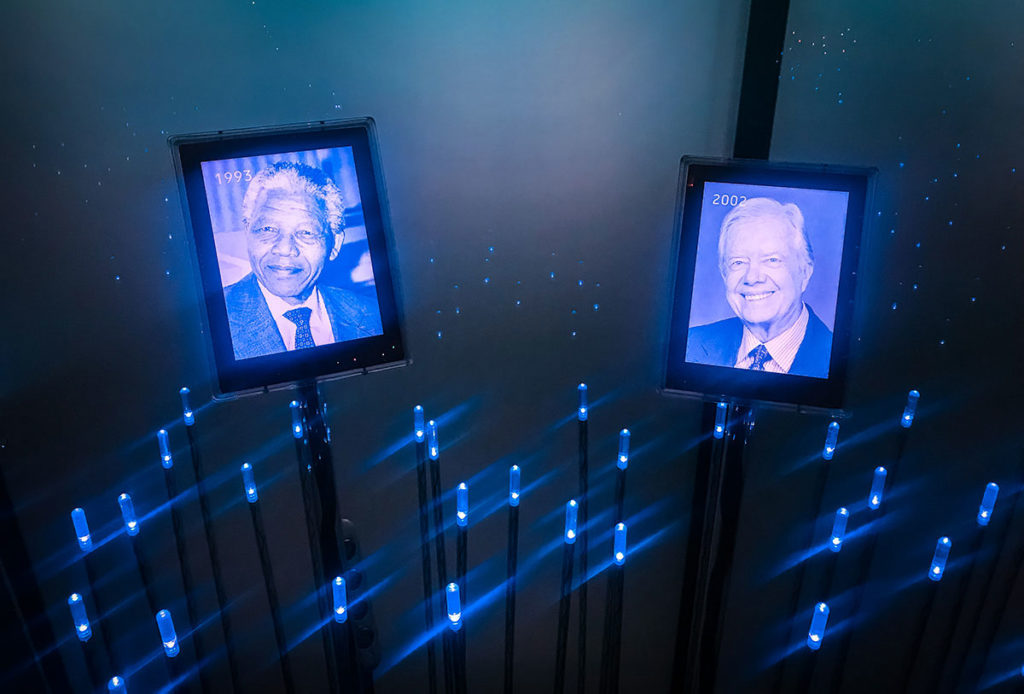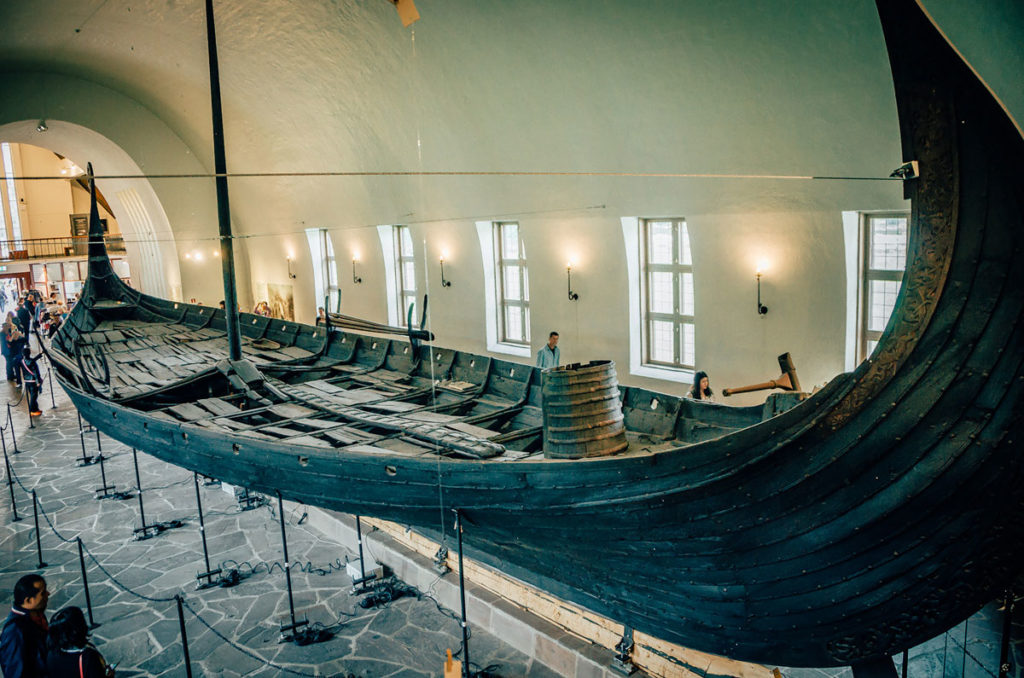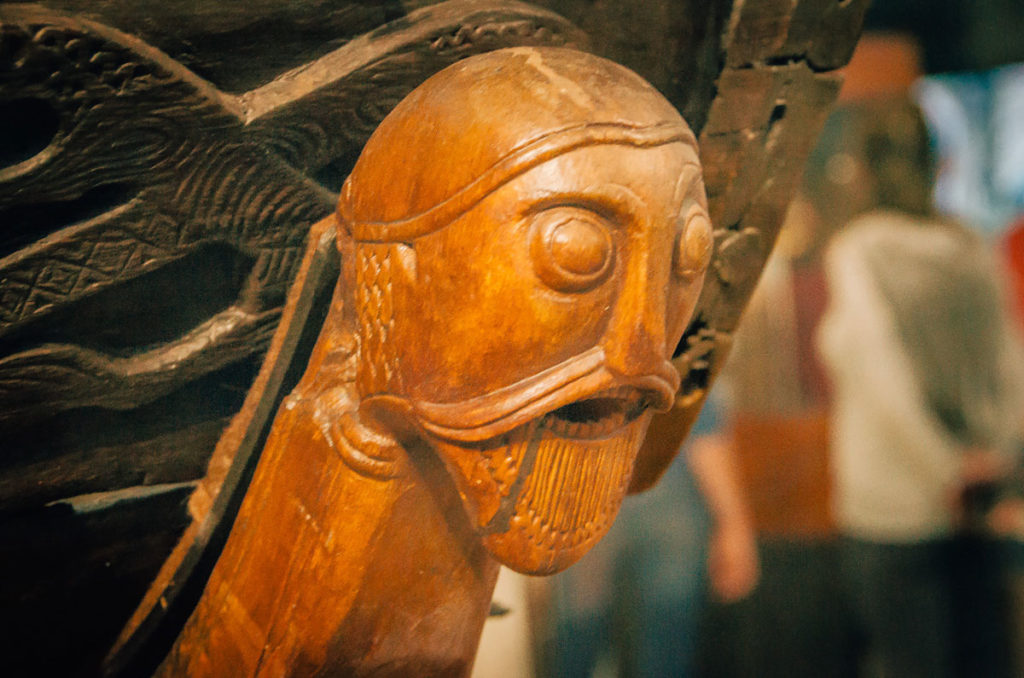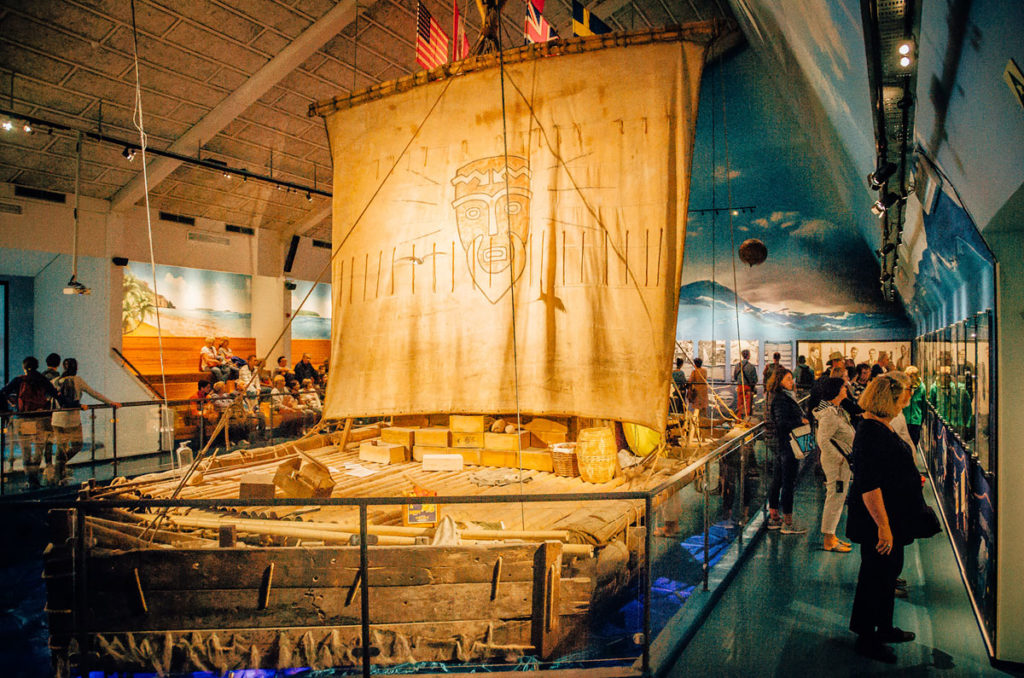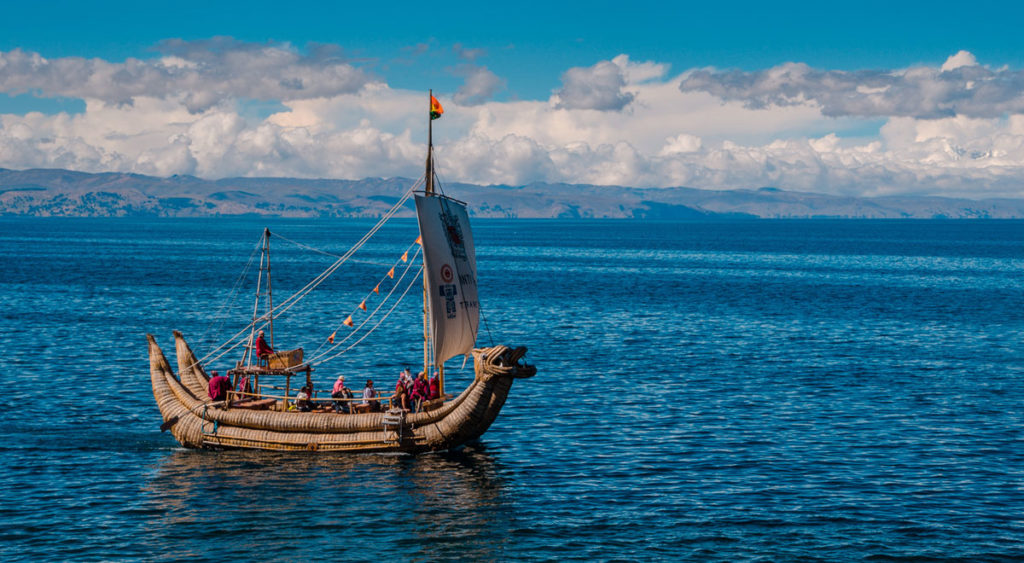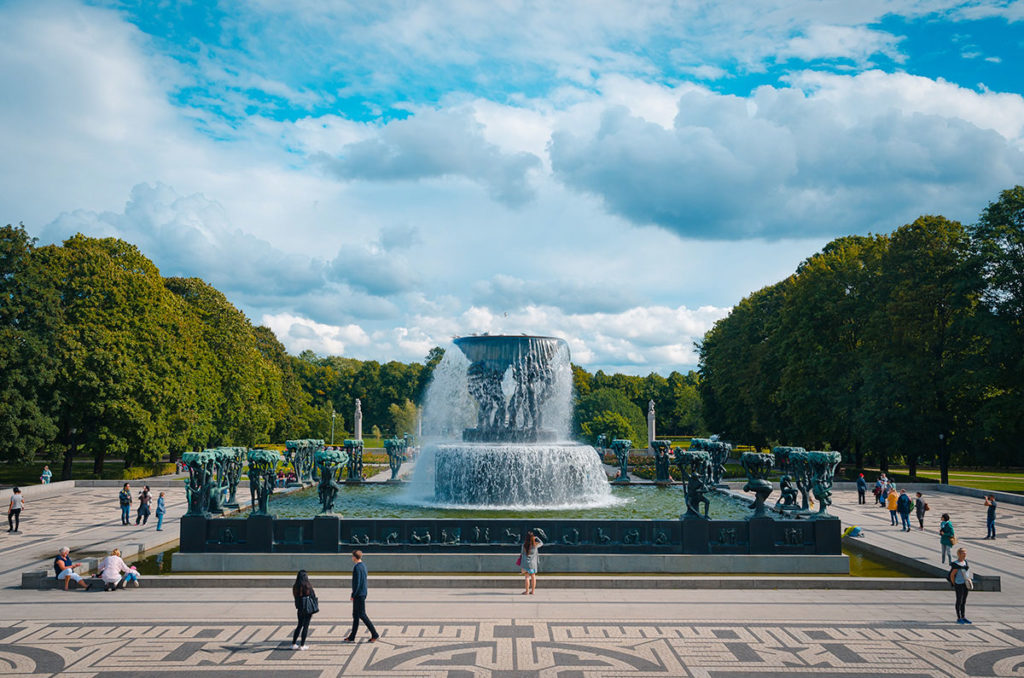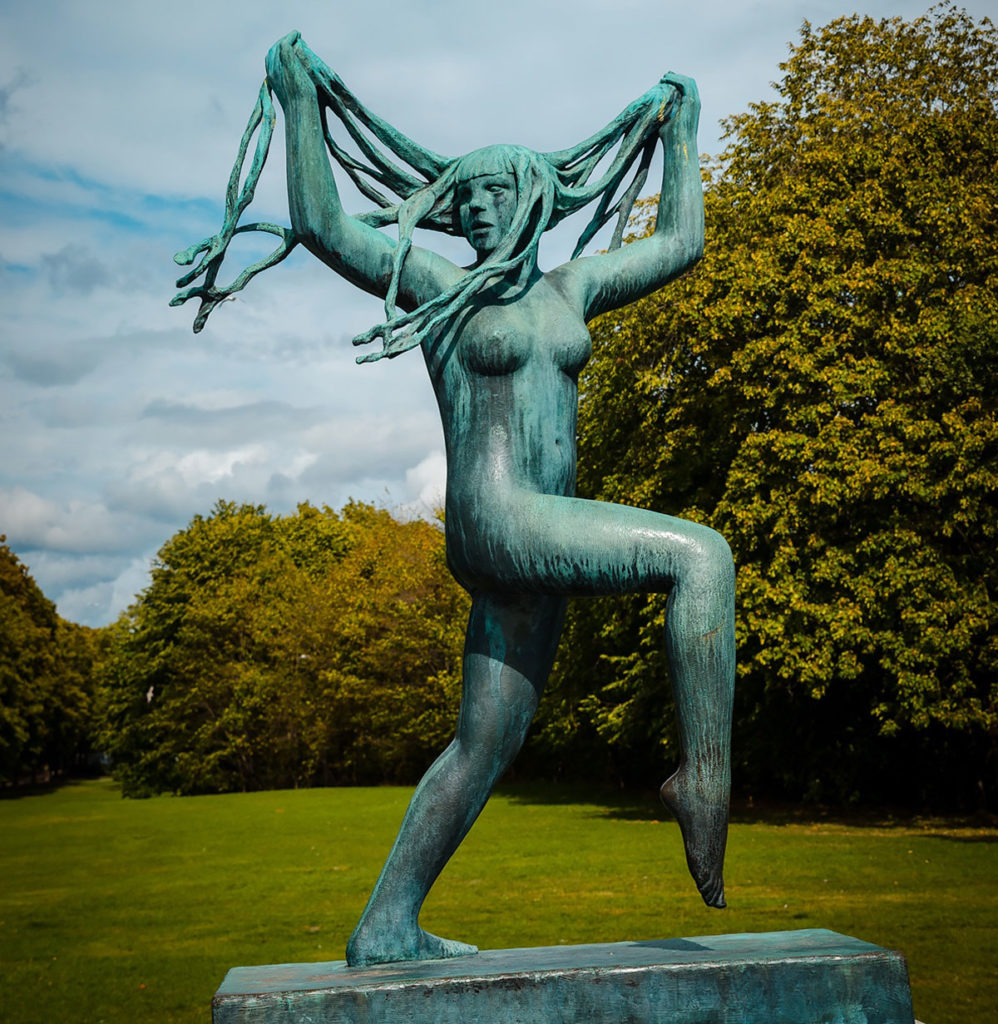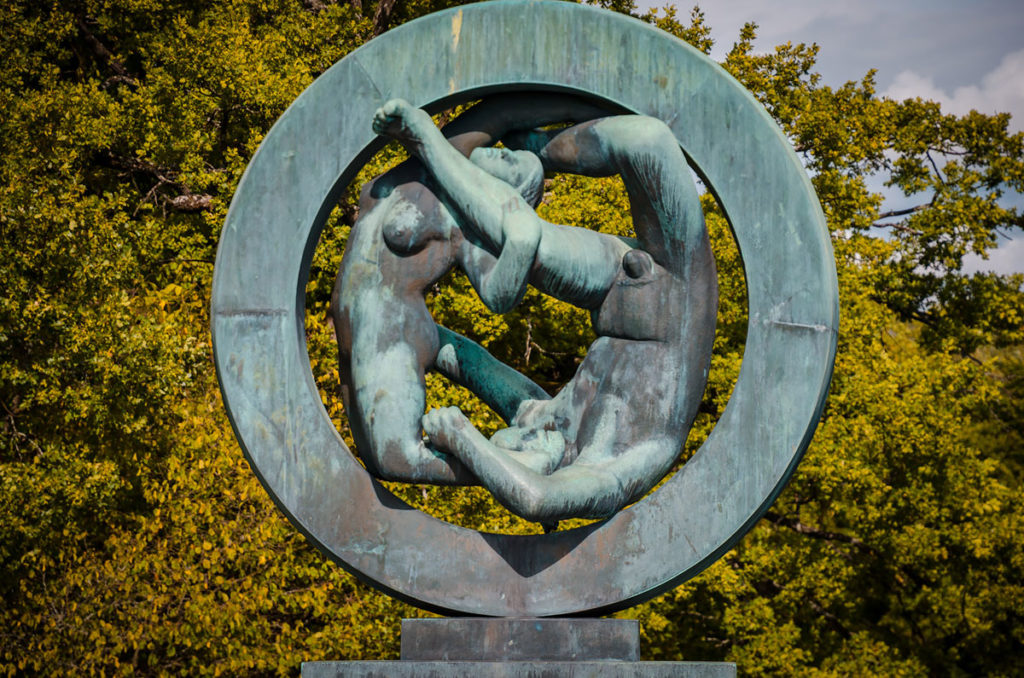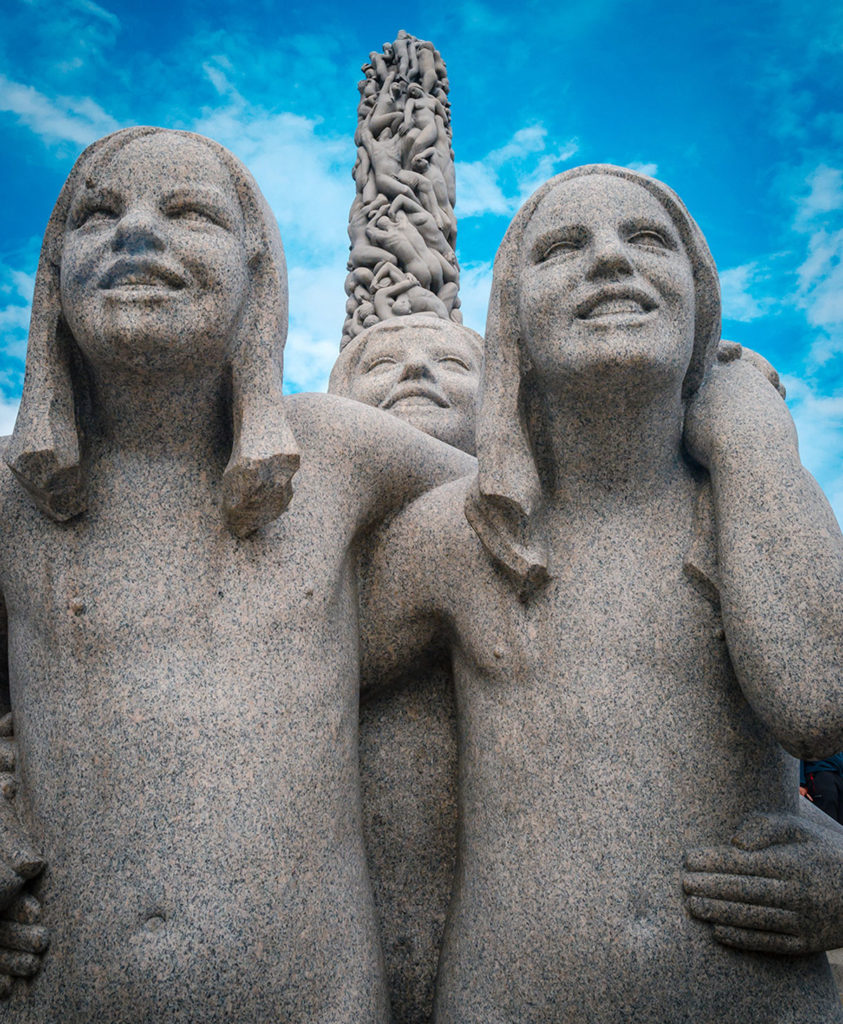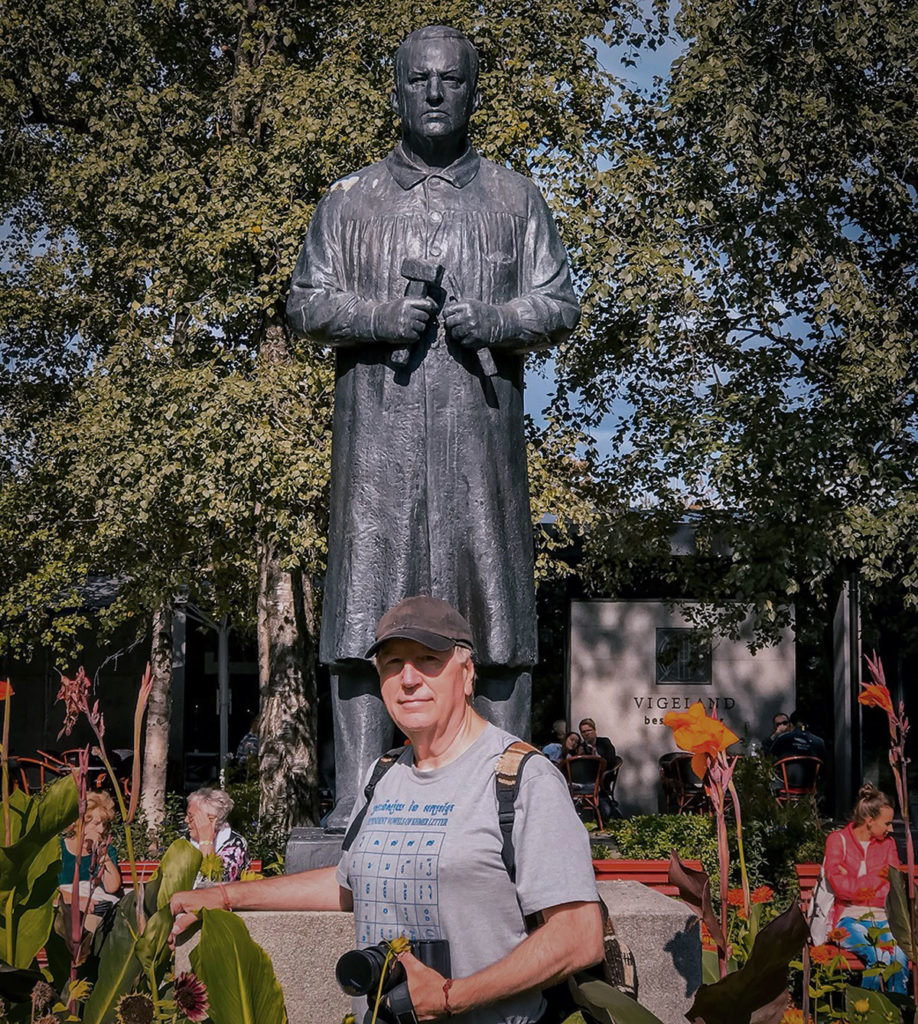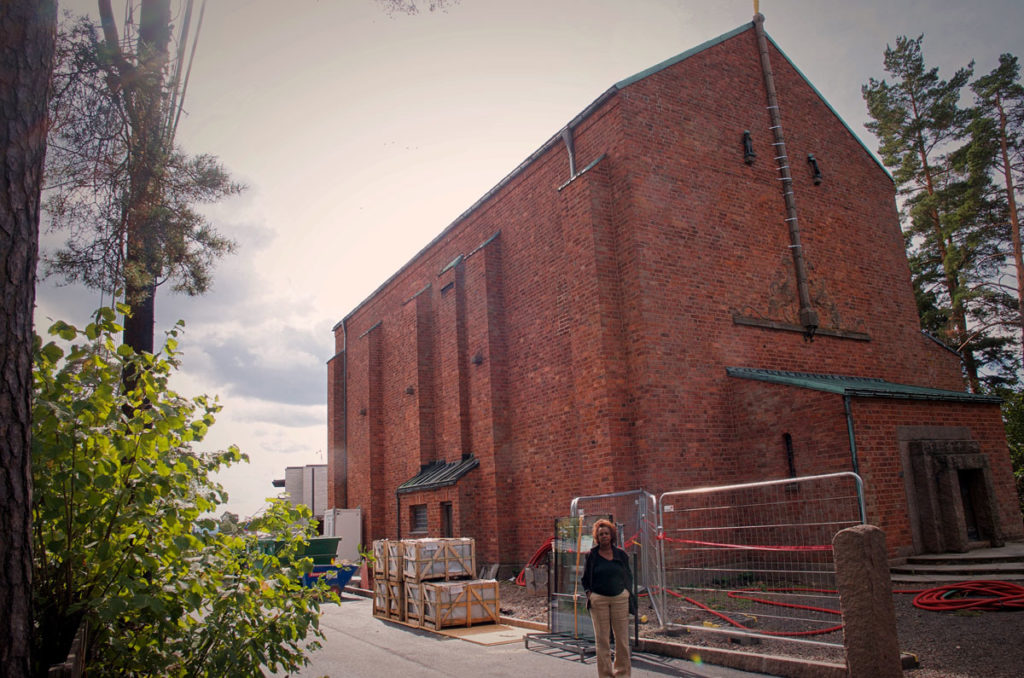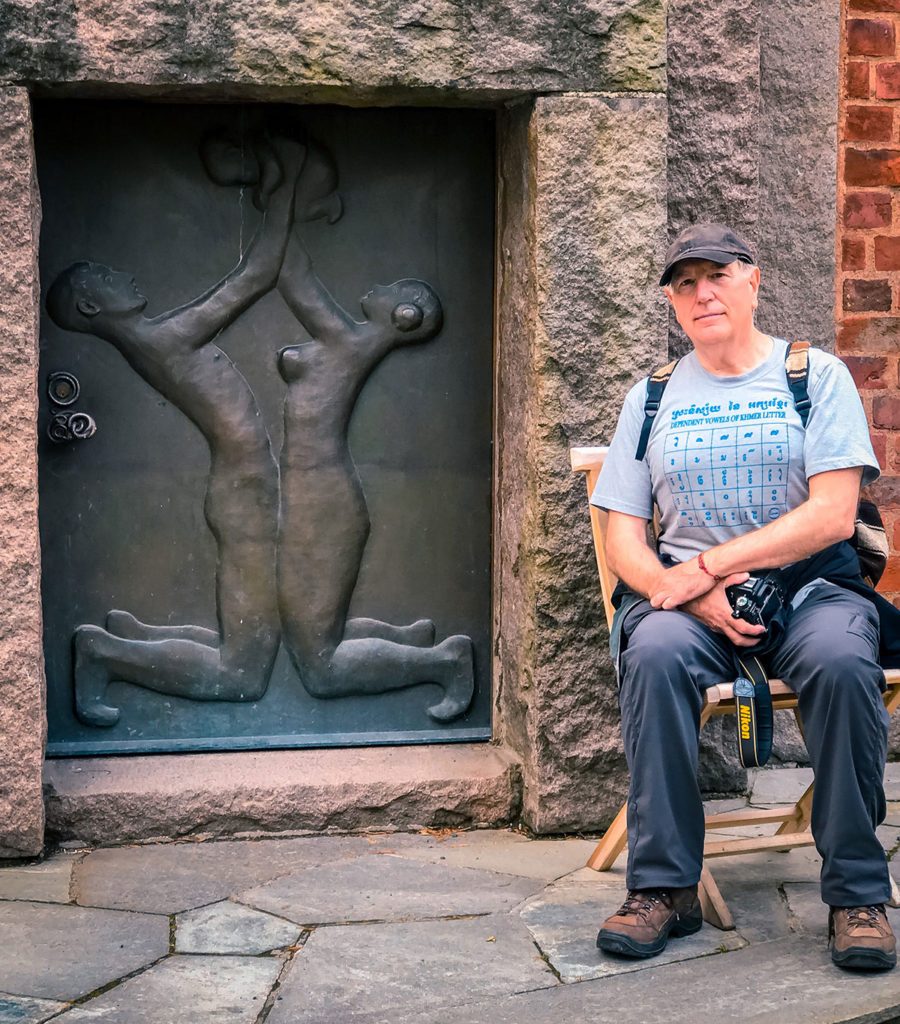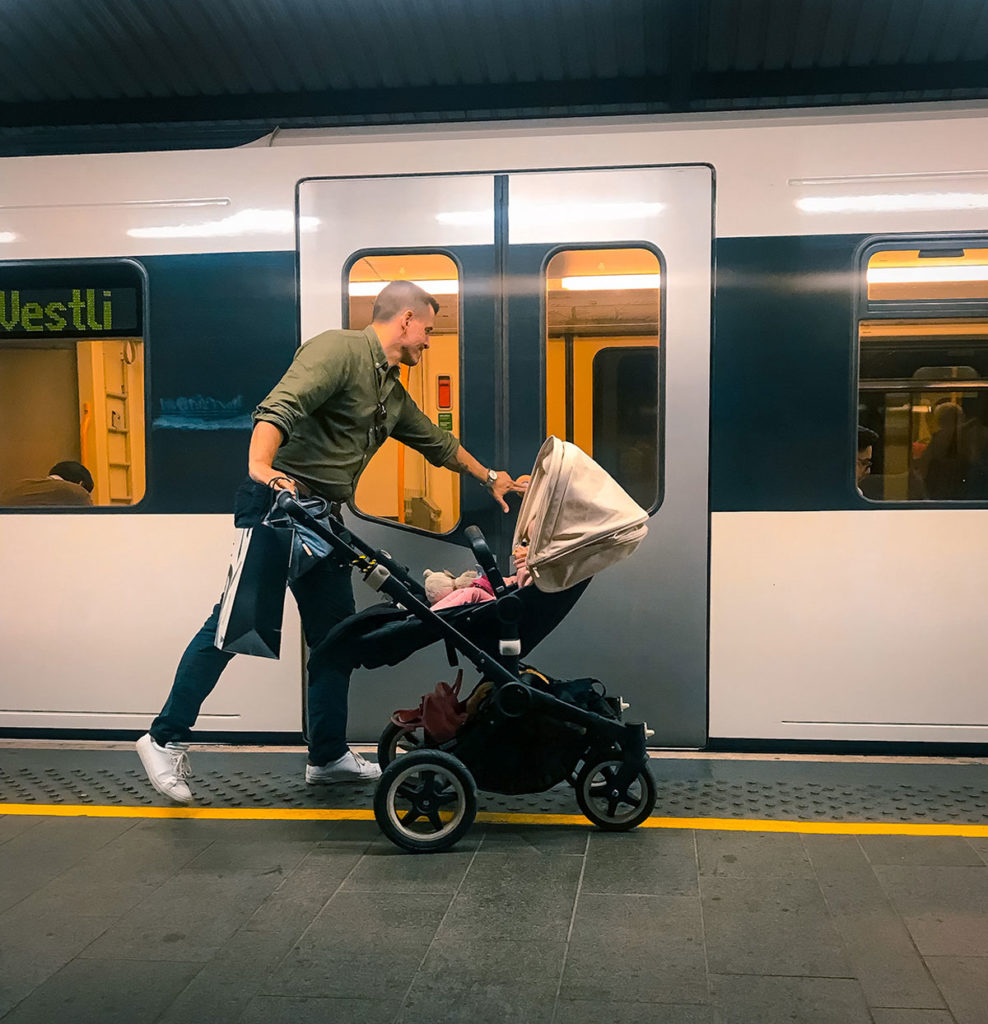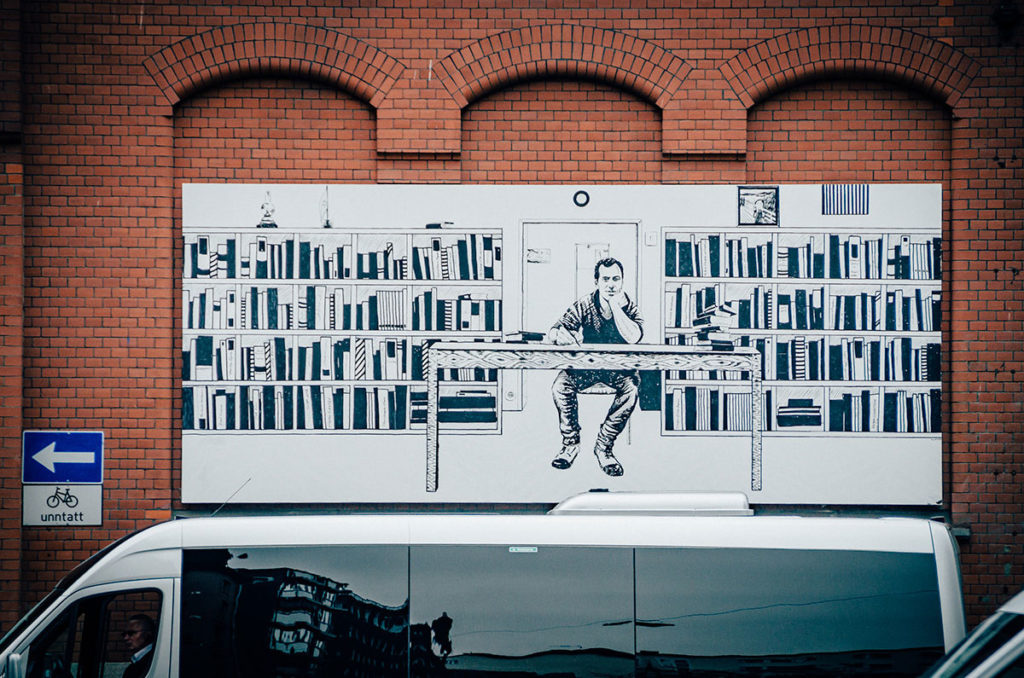Introduction
On my first visit to Oslo, we went to the city’s top attractions, including Vigeland Sculpture Park…
…the Parliament Building…
…and the Nobel Peace Center.
We are fortunate usually to have good friends where we travel, in this case, Khadija’s former colleague Rolf gave us a walking tour of Oslo.
Khadija thought her friend Nasrin might be here. They had not seen each other since 2011 when they both lived in Egypt. In 2013 Nasrin emailed and mentioned she was working for a non-governmental organization in Oslo.
Khadija called the NGO. A receptionist answered the phone and said Nasrin was in a meeting. Khadija explained she was a friend and she will be in Oslo only a few days. The receptionist said she will make sure Nasrin gets the message, because she had resigned, and this was her last day. Nasrin called back and met us that night.
She told us in a few weeks, she was leaving the country and getting married. The old saying is right, timing is everything.
Our Story
Khadija and I were traveling in Sweden, Norway, and Finland in August 2018. After spending a week on the Norway coast north of the Arctic Circle, we spent our last few days in the country in Oslo.
We stayed between the Central Train Station and the Akershus Fortress. We walked to most places, except for a ferry to the museums on the Bygdøy Peninsula and the Metro to Vigeland Park and the Munch Museum.
Background Information
Oslo is a rapidly growing city that is high tech and sophisticated but also preserves its natural environment. The city is connected to the Baltic Sea by a long and narrow Oslo Fjord (17km long by 1 km wide / 10 mi by 0.6 mi). Even though It is called the Oslo Fjord, it is technically just a waterway.
We bought Oslo Passes that gave us free entry to many museums and free public transportation. The individual price was 595 Norwegian Krone (about US$70) for a 48-hour period. We saved money on admissions and a lot of hassle figuring out how to buy tickets for the trains, ferries, and buses.
We used credit cards for almost everything and only spent local currency a few times such as giving money to buskers and beggars.
Norway is one of the leading countries in sustainable living with 98% of its electricity coming from renewable sources, mainly hydropower. Even though Norway is an extremely oil-rich country, they export nearly all of it. About one-third of the cars in Norway are electric. We often saw electric recharging stations on the Oslo street.
Norway has the biggest sovereign wealth fund in the world. It was established in 1990 for the investment of the surplus profit from the oil industry, mainly from fields in the North Sea. Unlike most countries that indebt future generations, Norway is investing to offset the projected decline in the revenue from the oil industry in the coming years. Following the same strategy, the fund has shifted its investments away from oil and gas to renewable energy.
Oslo Opera House
The Opera House in Oslo is one of my favorite modern buildings in the world. It is a work of art on a stand-alone basis. It seamlessly becomes part of the landscape, stretched horizontally on the shore, and rising gradually from the water. The building is a testament to the ability of smart urban planning and public investment to improve a neighborhood and a city. It is a reflection of Norwegian culture that treasures sleek design and functionality.
It was commissioned in 2000 and finished in 2008. The exterior is covered with Italian marble and white granite, reminiscent of ice on the rim of a fjord. The public can walk anytime on the sloping roof, where we saw people soaking up the sun
…building cranes dominate the skyline…
…and public art floating in the harbor.
This sculpture is a permanent installation named “She Lies”. It is a composition of stainless steel and glass panels created by Italian artist Monica Bonvicini. It floats on a concrete platform and turns with changes in the tide and water.
The interior features the “Wave Wall”, which is made from strips of golden oak. It provides a warm environment absorbing the sunlight from the vast windows, contrasting to the cool exterior.
The building is open to visitors 24 hours a day.
Akershus Fortress
The Akershus Fortress, built in the 1300s, is a sprawling park with centuries-old buildings surrounded by a huge stone wall.
The fortress was never captured in battle. However, during the Second World War, German forces occupied the fortress without resistance and used it as a prison and execution center. The complex has the Norwegian Armed Forces Museum and a prison museum that delves into the brutality of the Nazi occupation.
We liked walking through the leafy, hilly park grounds…
…observing the buildings of different vintages…
…and the monumental statues.
We stayed about an hour to around 5pm when buildings were closed to visitors. As it is on a rampart, we had a great view of a harbor used mainly by ferries.
Hug Life
The Sentrum area is the historic core of Oslo, containing significant historical buildings, museums, shops, restaurants, bars, and public spaces. We walked through it many times, by the Parliament (Stortinget) with its imposing lion (pictured above) and under a temporary “Hug Life” display.
This art exhibition was a series of giant inflatable teddy bears with tattoos tethered to buildings. The creators were Nix and Johnny, known as BROSLO, an art design team that mixes street art with pop art. Hug Life was inspired by the contradictory sides of deceased rapper Tupac Shakur, fatherly and angry. BROSLO said the “teddy bear was created to give the world and the citizens of Oslo a hug and a smile”.
Nobel Peace Center
The Nobel Peace Center is a museum that tells the story of Alfred Nobel and the Peace Prize as well as the individuals who have been awarded the honor. Nobel, the inventor of dynamite, left US$9 million at his death in 1896 (worth about a quarter of a billion today) to establish the annual Nobel Prizes. According to his will, the Peach Prize is awarded in Oslo, while the other six are in Stockholm.
One of the permanent exhibits is the Peace Cloud that holds portraits of each laureate winner. Close together were the pictures of two of the people in my lifetime that I most admire, Nelson Mandela and Jimmy Carter.
I just finished reading a biography of one of the winners, former president of Liberia Ellen Johnson Sirleaf, by Liberia-born New York Times reporter Helene Cooper. Through her leadership, she guided the country back to normalcy after decades of ghastly civil war, punishing international debt and an Ebola epidemic. I was impressed by her support from marginalized Liberian women who protested against corruption and war, famously in white T-shirts.
Viking Ship Museum
We supplemented our meager knowledge about Viking culture in The Viking Ship Museum on the Bygdøy Peninsula. It holds a number of ships that were retired, buried, preserved by the earth, and reclaimed by archeologists. Our highlight was the Oseberg Ship discovered in 1904.
Our eyes were attracted to exquisite boat carvings.
These finds are the best-preserved Viking artifacts in the world.
Kon-Tiki Museum
My daughter Ayan and I saw the 2012 Norwegian movie Kon-Tiki when it opened in theaters. The movie reignited my fascination with Pacific Ocean exploration on rudimentary boats and enlivened my recollection as a youngster reading “The Kon-Tiki Expedition: By Raft Across the South Seas by Thor Heyerdahl. So, I was psyched to go to the Kon-Tiki Museum.
Thor Heyerdahl wanted to prove it was possible that pre-Columbian America and Polynesia had been in contact using primitive boats. In 1947, he built the Kon-Tiki raft, named after the Inca sun god, using primarily balsa wood which grows naturally in Central and South America.
He sailed the raft with five other men from Peru to French Polynesia in 101 days over 6,900 km (4,300 mi). The success made him world-famous. Interestingly, Heyerdahl studied zoology and geography and worked as an anthropologist. He could not swim, no formal engineering training, and never sailed before.
Heyerdahl made many other explorations in his life, the most famous were the Ra I and Ra II. He reasoned that the Phoenicians sailed great distances in reed boats, which are still used in the Mediterranean, West Africa, and South America. He also noticed the Olmecs, Aztecs, and Incas had similar calendars to the Egyptians which started around 3000BC. He deduced that the early Olmecs could have been influenced by the Phoenicians crossing the Atlantic Ocean. This theory was discounted by experts who believed reed boats could not last a voyage across the Atlantic Ocean.
In 1969 he constructed Ra I, named after the Egyptian sun god. He built the boat in Egypt by the Pyramids which helped him publicize the trip. He employed boat builders from Lake Chad to help construct Ra I. Heyerdahl essentially built a 45-foot replica of a vessel from drawings and models from ancient Egypt using papyrus from Lake Tana in Ethiopia. The boat was launched in Morocco with Barbados as the destination. After 4,800 km (3000 mi) he aborted the mission because the reeds had absorbed too much water and the boat was in imminent danger of sinking. He was about 1,000 km (600 mi) short of his destination.
Undeterred, in 1970 he hired Aymara-speaking, indigenous boat makers from Lake Titicaca to construct the new boat, Ra II. Heyerdahl flew them to Morocco for the work. They employed design features (e.g. the boat was 40 feet long, 5 fewer feet than Ra I) and construction techniques (such as knot making) used where they lived. Instead of papyrus, the boat was made from a reed called Totora from Lake Titicaca.
Heyerdahl sailed with an international crew of six other men. He traced the same path of Ra I and successfully landed in Barbados 56 days later.
A few months before our visit to Oslo, Khadija and I were on Isla del Sol in the Bolivian part of Lake Titicaca. We saw for the first time a reed boat sailing.
A side benefit from the Ra II voyage was Heyerdahl documented the frightening amount of pollution in the ocean from oil, plastic containers, nylon bags, empty bottles, and other refuse.
Fram Museum
The Norwegian ship Fram was used for Arctic and Antarctic exploration from 1892 to 1912. It is known as the toughest wooden vessel of its type for having sailed farther north and farther south than any other ship. The Fram Museum showcases this remarkable vessel and documents its many polar expeditions.
The highlight for us was the simulated voyage on the Fram, using a video of a storm that goes all the way around the boat.
After just being in the Viking Ship and Kon Kiki museums, our attention span was limited. We spent less than an hour, which was inadequate considering all of the displays and interactive opportunities.
Gustav Vigeland Sculpture Park
Vigeland Park is the largest single-artist sculpture park in the world, dedicated to the works of Gustav Vigeland (1869–1943). It is a component of Frogner Park, which also contains the Oslo City Museum.
In 1921, Vigeland entered into an unusual arrangement with the city of Oslo. The city paid him a salary, provided studio space for the remainder of his lifetime, turned the studio into a museum at his death and displayed his work in Frogner Park, In return, Vigeland donated a large amount of his work to the city.
We saw sculptures ranging from a dynamic human figure portrait…
…to a dreamlike projection…
…to a tender portrayal…
The Vigeland Park area covers 80 acres (320,000 m2) with over 200 Vigeland sculptures made of bronze and granite There was one statue of him with hammer and chisel in hand.
Here’s how I quickly summed up my feelings about this awesome sculpture park.
After walking through the park, I appreciated his unique style of quasi-realistic human figures oozing with a wide range of emotions. Not surprisingly, I later read that he was controversial as his work often involved naked human figures in suggestive positions and phantasmagorical subjects.
Emanuel Vigeland Mausoleum
We had so far visited only the greatest hits of tourist attractions in Oslo but found one that is not well known and infrequently visited, the Emanuel Vigeland Mausoleum. When we asked for directions at the nearest Metro station, only an architect with good English was able to direct us. Emanuel was Gustav’s brother who chose to display his artwork in a Byzantine-style building in what would become his tomb.
He had originally meant for it to be a museum displaying his work, but when he had finished part of the fresco, he decided the building would be his final resting place and bricked up all windows. (This family was definitely eccentric.) The highlight of the interior is an 800 sq., m (84 sq. ft) fresco called Vita (Life). It was closed when we there and we could not see through the bricked windows and closed doors. If we would have checked on the hours, we would have known it was only open on Sunday afternoon. Nevertheless, we were able to inspect the exterior and observe the surrounding residential life.
Munch Museum
We made it a point to go to the Munch Museum with over 30,000 of his possessions, including paintings, documents, furnishings, and letters. Munch (1863 – 1944) was a Norwegian painter who specialized in depicting loneliness, alienation, and fear. To many, Munch’s work is summed up by his iconic “Scream of Nature” painting which is the model for the killer’s mask in the movie “Scream”. The original oil painting (which is in color and not black and white as many believe) is not here but in the Oslo National Gallery. The Munch Museum owns a pastel painting of it.
Here is a self-portrait in his later years.
When we were there, the museum was next to the Natural History Museum, but not for long. The City was constructing a new building near the Opera House to accommodate the increasing number of visitors.
Street Life
In our few days in Oslo, we concentrated our energy on being with friends and seeing the main tourist sights. It left little time for street photography. We did notice that in general, the local population looked healthy.
According to our friends in Norway and Sweden, the Norwegians and Swedes go out of their way not to disturb others. They are much less likely to initiate a conversation in a public place with a stranger. Once I was aware of this, I started acting this way too and did not engage locals as much as I normally do. It probably was completely unnecessary, as they do not expect foreigners, especially Americans, to behave like this.
We were also impressed by how many fathers were taking care of young children.
Perhaps, the sharing of childing-rearing is a function of the Nordic countries’ equalitarianism.
Even though Oslo has public art throughout the city, we did not see many outdoor murals and graffiti art. However, I did see a metal sign I liked, a black and white one of a man sitting in a library.
Notice the Scream painting on the upper right side.
Final Thoughts
We spent 12 activity-packed days in Norway visiting the northern Atlantic coast and Oslo. I consider this the minimum time to get a feel for the geography and the culture. Our final stop on this summer vacation was Finland, out next destination.



